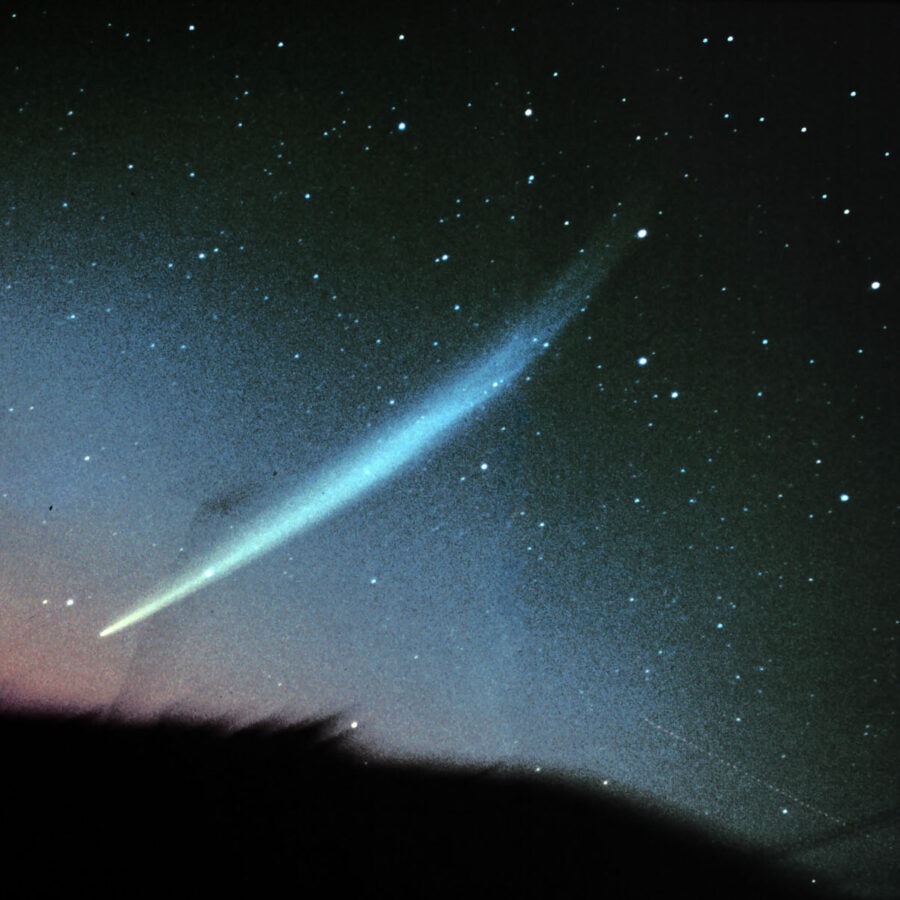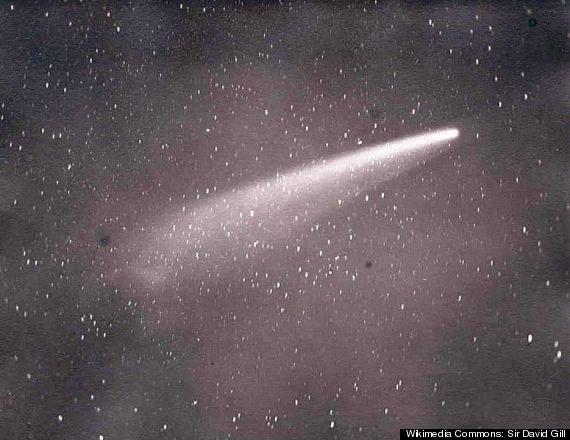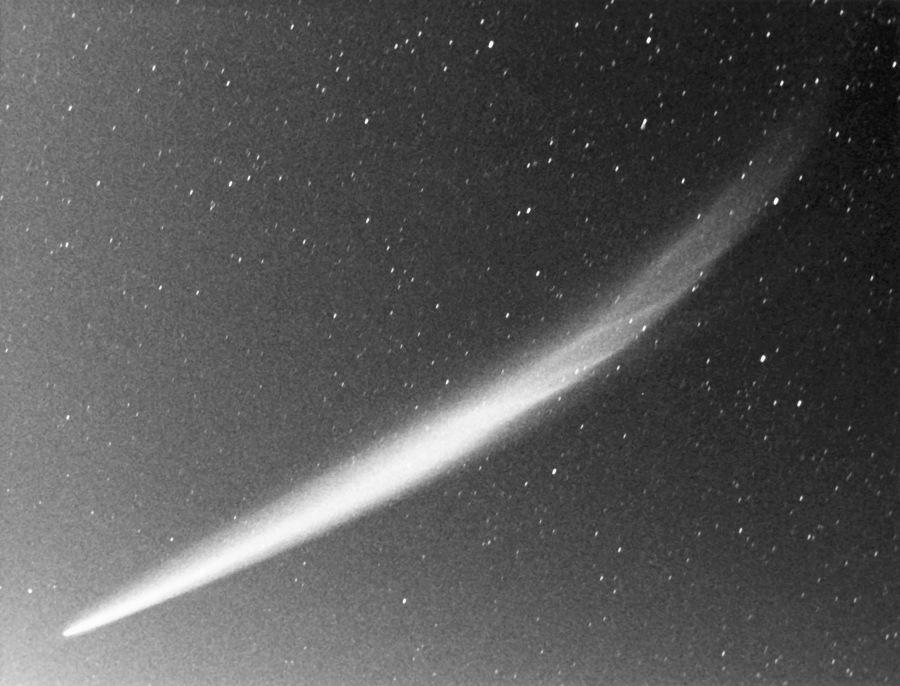A Celestial Spectacle that Ignited Wonder and Captivated the World
Prof. Aécio D’Silva, Ph.D
AquaUniversity
Witnessed the beauty the mesmerizing beauty of Comet Ikeya Seki as it graced the skies, captivating hearts, and minds with its radiant glow, making it the brightest comet of the 20th century
Comet Ikeya Seki – Fifty-eight years ago, on a winter like this, I witnessed one of the brightest and most impressive comets ever observed by mankind. He displayed an impressive spectacle in the morning twilight sky. It appeared almost out of nowhere and was ten times brighter than the full moon. Two Japanese amateur astronomers, Kaoru Ikeya and Tsutomu Seki, independently discovered on September 19, 1965, the comet that bore their surnames, IKEYA SEKI a spectacular celestial body that could be seen with the naked eye
In my childhood, I had the privilege of witnessing the mesmerizing beauty of this comet that adorned the skies, captivating hearts and minds with its radiant glow in 1965. It became the brightest comet of the 20th century leaving indelible images on me and all those who saw it.
Almost 58 years ago, in October 1965. one early morning just before dawn, my late father, Ten. Friar woke me up and asked us to see something wonderful, bright, majestic, and unforgettable appearing in the firmament of our street: it was the incredible comet Ikeya Seki showing its splendid and grandiose beauty in the skies of the world and of my city of Belo Jardim-PE. When we got to the front of the house, we were ecstatic with what we saw. A group of friends were already enraptured with what we began to see. A work of Divine and heavenly art crisscrossing the heavens like a long bouquet of gleaming stars beautifying our dawn. Something that stuck in my mind to never forget. It was the comet Ikeya Seki of my life and childhood with a transcendental beauty. At its maximum length, Ikeya-Seki’s tail spanned 112.6 million kilometers, ranking it as the fourth largest on record. The distance from the center of the earth to the center of the sun is 149.6 million km. This measurement is also called the Astronomical Unit – AU.
Since I was a child, I have been passionate about starry nights. In the vast expanse of the universe, celestial phenomena often ignite curiosity and wonder among stargazers and astronomers alike. Among these breathtaking events, comets hold a special place. Their ethereal beauty, unpredictable paths, and brilliant tails have fascinated humanity for centuries. One such remarkable comet that adorned our skies and captured the world’s attention was Comet Ikeya Seki. Discovered in 1965 by two Japanese astronomers, Kaoru Ikeya and Tsutomu Seki, this celestial visitor left an indelible mark in the annals of astronomical history. Let us embark on a journey to uncover the mysteries surrounding Comet Ikeya Seki and understand why it holds the distinction of being the 20th century’s brightest comet.
The Discovery and Origin of Comet Ikeya Seki
Comet Ikeya Seki, officially designated as C/1965 S1, was first observed on September 18, 1965, by Kaoru Ikeya and Tsutomu Seki, working independently in Japan. The comet quickly gained recognition due to its astonishing brightness, becoming visible to the naked eye within a few days of its discovery. It soared across the skies, captivating both professional astronomers and amateur stargazers worldwide.
Comets like Ikeya Seki are believed to originate from the Oort Cloud, a vast reservoir of icy objects situated at the farthest reaches of our solar system. It is hypothesized that gravitational perturbations caused by the passage of nearby stars or gravitational interactions within the cloud itself may have disrupted the comet’s orbit, sending it hurtling toward the inner solar system.
A Celestial Showstopper and Global Fascination
As the Comet approached the Sun, its journey took it perilously close to our star’s scorching surface. This proximity triggered a spectacular display as solar radiation caused the icy nucleus of the comet to vaporize, releasing gas and dust in a magnificent tail that stretched across the night sky.
The brilliance of this Comet was unparalleled. At its peak, it outshone even the planet Venus, becoming one of the brightest objects in the heavens. Amateur astronomers and curious onlookers flocked to witness this celestial spectacle, tracing the comet’s path as it adorned the night sky like a shimmering jewel.
Scientific Insights and Legacy
Comet Ikeya Seki offered a unique opportunity for astronomers to study the composition and dynamics of cometary bodies. By analyzing the light emitted by the comet and its tail, scientists were able to glean valuable insights into the chemical makeup of these ancient objects.
Additionally, observations of Comet Ikeya Seki provided crucial data for refining models of cometary orbits, shedding light on the complex gravitational interplay within our solar system. The knowledge gained from studying this brilliant celestial visitor deepened our understanding of the cosmos and paved the way for further exploration.
Comet Ikeya Seki – A Farewell and Enigmatic Return
As Comet Ikeya Seki bid farewell to our skies, it embarked on a trajectory that would take it back to the depths of the Oort Cloud, where it is believed to have resided for thousands of years. Despite its breathtaking brilliance during its 1965 appearance, the comet remains elusive, offering a sense of mystery and anticipation for its potential return in the further future.
Comet Ikeya Seki’s remarkable journey through our solar system left an indelible mark on the hearts and minds of those who witnessed its brilliance. As the 20th century’s brightest comet, it captivated the world with its ethereal beauty and mesmerizing tail that adorned the night sky. Its discovery by Kaoru Ikeya and Tsutomu Seki in 1965 brought a celestial spectacle that ignited wonder and curiosity among both amateur stargazers and professional astronomers.
Beyond its aesthetic appeal, Comet Ikeya Seki provided invaluable scientific insights into the composition and dynamics of comets. The observations made during its passage enabled researchers to refine models of cometary orbits and deepen our understanding of the intricate gravitational interactions within our solar system. This knowledge serves as a stepping stone for future explorations and discoveries in the realm of celestial bodies.
As we bid farewell to comet Ikeya Seki, its mysterious return perhaps by the year 2565 to the earthly skies, leaves us with a sense that time and space interconnect in the expectations of future generations. Perhaps, in a very distant dawn, it will grace the night eyes once more, reminding everyone of the vastness and beauty of God’s creation. Until then, his legacy and the memories he forged will continue to inspire awe and spark curiosity in all of us. IKEYA SEKI remains in my mind as an iconic spectacle and undoubtedly the comet of my life!
References:
Yeomans, D. K. (2008). Comet Ikeya-Seki (1965f). In Kronk, G. W., & Meyer, M. (Eds.), Cometography: A Catalog of Comets (Vol. 3, pp. 235-242). Cambridge University Press.
Hughes, D. W. (1966). Comet Ikeya-Seki, 1965n. Nature, 209(5027), 1110-1112.
Sekanina, Z., & Marsden, B. G. (1967). Comet Ikeya-Seki, 1965f. The Astronomical Journal, 72, 990-997.
Moriarty, D. P. (1966). Photographic observations of Comet Ikeya-Seki. Publications of the Astronomical Society of the Pacific, 78(461), 37-40.




